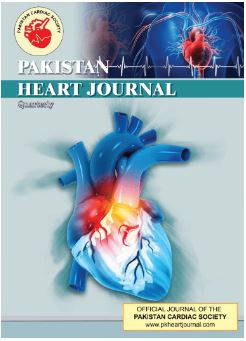A Cross-Sectional Analysis of Hyperkalemia and Estimated Glomerular Filtration Rate (Egfr) and its Correction was Carried Out in Patients Receiving Maintenance Hemodialysis (MHD) In a Tertiary Care Institution in Salem, Tamilnadu, India.
Main Article Content
Abstract
A major global health concern and leading cause of death is chronic renal failure (CRF). Hyperkalemia is a problem that many people with End Stage Renal Disease (ESRD) deal with. The goal of the current study is to compare the serum electrolyte levels, serum creatinine levels, eGFR, systolic and diastolic blood pressure, and weight of maintenance hemodialysis (MHD) patients before and after dialysis. 44 MHD patients were selected to assess their serum electrolytes by Ion selective electrode, Creatininie was estimated by Jaffe’s method in an autoanalyser in Biochemistry department of Vinayaka Mission’s Kirupananda Variyar Medical College & Hospital (VMKVMCH), Salem, Tamil Nadu. The eGFR was calculated by using MDRD (Modification of Diet in Renal Disease) formula. The pre hemodialysis K+ was 4.9 ±0.9 mEq/L and post hemodialysis K+ was 3.7 ± 0.5 mEq/L. The pre hemodialysis Na+was 135.8 ±14.9 mEq/L and post hemodialysis Na+ was 138.7 ± 9.2 mEq/L. The pre hemodialysis Cl- was 107.7 ±15.6 mEq/L and post hemodialysis Cl- was 106.7 ± 9.7 mEq/L. The pre hemodialysis Creatinine was 8.5 ±3.1 mg/dL and post hemodialysis Creatinine was 3.7 ± 1.4 mg/dL. The eGFR was 7.6 ±4.5 mL/min/1.73m2 prior to hemodialysis and it was was 19.1 ± 8.1mL/min/1.73m2 after hemodialysis. In our study, out of 44 MHD patients 21 patients are hyperkalemic. The average Potassium level increased along with renal function decreases( stage 4: 5.2 ± 0.14, stage 5: 6.5 ± 0.75 mEq/). The Systolic Blood Pressure (SBP) and Diastolic Blood Pressure (DBP) were reduced from 165.9 ± 20.8 mm of Hg to 146 ±15.2 mm of Hg and 90.2 ±13.5 mm of Hg to 84.7± 6.6 in post hemodialysis. Patients with MHD lost weight, going from 64.4± 13.4 kg to 61.7 ±13.3 kg. We conclude that eGFR improved and serum K+ and serum creatinine were significantly lower than pre-hemodialysis. Serum Na+ and Cl- levels were not statistically significant in the post-hemodialysis phase. Weighing, SBP, and DBP were statistically significant.
Article Details

This work is licensed under a Creative Commons Attribution-NoDerivatives 4.0 International License.

